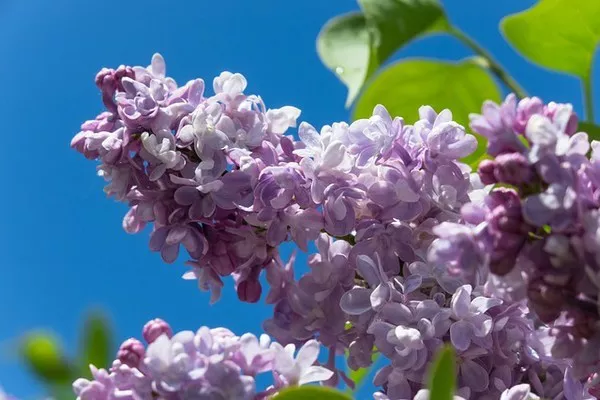Lilac flowers, known for their enchanting fragrance and vibrant hues, bring joy to any garden or floral arrangement. However, the ephemeral nature of their bloom leaves enthusiasts seeking ways to preserve this beauty for a longer duration. In this comprehensive guide, we delve into various techniques and methods to successfully preserve lilac flowers, allowing you to savor their charm long after the bloom season has passed.
Understanding Lilac Flowers
Before embarking on preservation methods, it’s crucial to understand the anatomy of lilac flowers. Lilacs belong to the genus Syringa, and their blooms consist of delicate petals arranged in panicles. Proper preservation requires careful handling to maintain the shape, color, and fragrance of these exquisite flowers.
Harvesting Lilac Flowers
The timing of harvesting significantly influences the success of preservation. Aim to harvest lilac flowers early in the morning when they are well-hydrated and before the heat of the day causes them to wilt. Choose blooms that have just opened or are about to open, as they will retain their vibrant colors during the preservation process.
Air Drying: A Time-Tested Method
1. Choose the Right Blooms:
Select lilac flowers that are free from blemishes, diseases, or signs of decay. Trim the stems to your desired length, ensuring they are uniform for a cohesive arrangement.
2. Bundle and Secure:
Gather the lilac stems into small bundles, securing them with rubber bands or twine. Keep the bundles manageable to ensure proper air circulation.
3. Hang Upside Down:
Suspend the lilac bundles upside down in a cool, dry, and dark area. This traditional drying method allows the flowers to retain their shape and color.
4. Patience is Key:
Air drying may take several weeks, so patience is crucial. Check the progress regularly and make adjustments if necessary.
Pressing Lilac Flowers
1. Preparation is Crucial:
Lay the lilac blooms flat between layers of absorbent paper or within the pages of a heavy book. Ensure that the flowers do not overlap, preventing uneven pressing.
2. Weight for Success:
Place additional weight on top of the paper or book to press the lilac flowers effectively. Heavy books or flower presses work well for this purpose.
3. Monitor Progress:
Leave the lilacs pressed for 2-4 weeks, periodically checking for dryness. Adjust the layers or replace the paper if it becomes saturated.
4. Delicate Handling:
Once dried, carefully remove the pressed lilac flowers, handling them gently to prevent breakage.
Silica Gel: A Modern Approach
1. Invest in Silica Gel:
Silica gel is a desiccant that efficiently absorbs moisture, making it an ideal substance for drying and preserving lilac flowers.
2. Submerge in Silica:
Place the lilac blooms in a container and cover them completely with silica gel. Gently pat the gel around the flowers, ensuring they are fully surrounded.
3. Seal and Wait:
Seal the container and leave it undisturbed for about a week. Silica gel will draw out the moisture from the lilac flowers, preserving their natural form.
4. Careful Extraction:
Once the preservation process is complete, carefully remove the lilac flowers from the silica gel, brushing off any excess particles.
Waxing Lilac Blooms
1. Melted Paraffin Wax:
Gently melt paraffin wax in a heat-resistant container. Ensure the wax is not too hot to avoid damaging the lilac flowers.
2. Dip and Coat:
Dip the lilac blooms into the melted wax, ensuring an even and thorough coating. Hold the flowers upside down to allow excess wax to drip off.
3. Set and Dry:
Place the wax-coated lilac flowers on parchment paper to cool and dry. The wax provides a protective layer, preserving the flowers’ shape and color.
Creating Lilac Potpourri
1. Gather Additional Materials:
In addition to lilac flowers, collect complementary materials such as dried herbs, citrus peels, and spices to enhance the potpourri.
2. Drying the Components:
Air dry or use the silica gel method to preserve the lilac flowers and other components of the potpourri.
3. Mix in Desired Proportions:
Combine the dried lilac flowers with other aromatic elements in a bowl. Experiment with different combinations to achieve the desired fragrance.
4. Display and Enjoy:
Place the lilac potpourri in decorative bowls or sachets to infuse your space with the delightful scent of lilacs.
Preserving Lilac Flowers in Glycerin
1. Choose Fresh Blooms:
Glycerin preservation works best with freshly harvested lilac flowers. Select blooms that are just beginning to open.
2. Prepare Glycerin Solution:
Mix one part glycerin with two parts warm water. Ensure the solution is well-mixed before submerging the lilac stems.
3. Submerge and Wait:
Place the lilac stems in the glycerin solution, ensuring the cut ends are submerged. Leave them in the solution for 2-6 weeks, allowing the glycerin to replace the water in the stems.
4.Pat Dry and Arrange:
Once the preservation process is complete, pat the lilac blooms dry with a paper towel and arrange them as desired.
Conclusion
Preserving lilac flowers allows you to extend the joy of their beauty far beyond the bloom season. Whether you opt for traditional air drying, pressing, silica gel, waxing, potpourri creation, or glycerin preservation, each method offers a unique way to capture and enjoy the essence of lilacs. Experiment with these techniques to find the one that best suits your preferences, and relish the enduring charm of lilac flowers in your home or floral arrangements.


